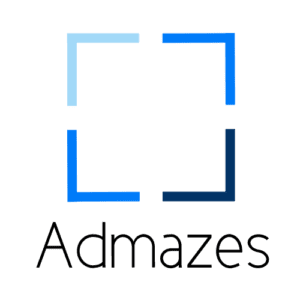What is Composable CDP?
Every customer data point is a vital asset, prompting companies to invest billions annually.
Customer Data Platforms (CDPs) changed marketing by making customer data accessible, coming before affordable cloud options. Prior to CDPs, there was a huge gap between data and marketing teams because non-technical users had no ability to access data assets. CDPs are one of the most revolutionary technological advancements in the martech world. For years companies have relied on them to power their customer-facing experiences.
Traditional CDPs were the go-to solution, collecting and activating data for personalized experiences. However, traditional CDPs faced numerous challenges such as data ownership, inflexibility, and high costs. Now, a transformative wave introduces the Composable CDP, reshaping the landscape. This innovative approach eliminates the necessity for a parallel CDP, revolutionizing how businesses utilize their existing data warehouses.
The Problems of Traditional CDPs
Traditional CDPs come with a set of challenges that hinder their seamless integration into existing data ecosystems. Understanding these limitations is crucial for companies aiming to optimize their customer data strategies.
Data Storage Redundancy:
Traditional CDPs create a second source of truth, necessitating the storage of data outside the existing data infrastructure.
This redundancy leads to increased complexity and challenges in maintaining consistent and up-to-date information.
Inflexibility in Data Types:
Traditional CDPs are primarily designed for clickstream data, lacking adaptability to handle diverse data types.
The rigid structure limits the incorporation of custom data models or first-party attributes without extensive engineering work.
Extended Time-to-Value:
The average implementation time exceeds six months, contributing to delays in achieving operational effectiveness.
Onboarding and training teams to use new tools further extend the time required for realizing value from the CDP investment.
Incomplete Customer View:
Traditional CDPs focus on collecting and storing behavioral data, resulting in a fragmented view of the customer.
Lack of access to existing first-party attributes like income, age, and gender hampers the ability to create comprehensive customer profiles.
Cost Inefficiency:
Traditional CDPs bundle features together, forcing organizations to pay for a complete set of functionalities, even if they do not need all components.
This cost structure makes these platforms expensive, especially for businesses with existing data processing capabilities.
Limited Customization:
Due to the tightly bundled architecture, customization options are limited.
Organizations often find themselves paying for features they do not need, restricting the flexibility to tailor the platform to specific use cases.
Tech-Debt Accumulation:
Any addition of new data sources or changes in data ingestion requires building new pipelines.
This contributes to the accumulation of technical debt and necessitates rearchitecting and reimplementation for each new use case.
Lack of Contextual Understanding:
Traditional CDPs often fail to capture the full complexity of business operations, ignoring offline actions, data science models, and unique first-party attributes.
This lack of contextual understanding limits the effectiveness of personalized marketing campaigns and customer engagement strategies.
Addressing these issues becomes imperative for companies seeking a more streamlined and efficient approach to customer data activation, paving the way for the adoption of Composable CDPs.
Enter the Composable CDP: Your Data, Your Rules
A Composable CDP acts as an activation layer, orchestrating data without storing it separately. Unlike traditional CDPs that bundle various components, a Composable CDP enables the activation of existing data using established practices, serving as a middleman between data assets and marketing tools. This approach ensures that businesses can leverage their current data infrastructure without the need for additional storage or complex integrations.
The Advantages of Composable CDP
Modularity:
Composable CDPs offer the freedom to select specific technologies for data data collection, storage, modeling, and activation, enabling a personalized architecture that precisely aligns with distinct business outcomes. Such tailored integration ensures not only cost-effectiveness but also heightened efficiency in addressing the diverse and unique needs of businesses.
Flexibility:
Unlike traditional CDPs that have no understanding of anything outside of your clickstream data, Composable CDPs provide immediate access to all types of data. This flexibility enables organizations to leverage any data source, accommodating a wide range of use cases and enhancing overall adaptability.
Compatibility:
Composable CDPs seamlessly integrate with any data infrastructure, mitigating concerns of vendor lock-in.
Enhanced Audience Curation:
Composable CDPs enable granular audience curation by leveraging all data within an organization’s warehouse, including behavioral data, offline actions, data science models, and first-party attributes. This comprehensive approach results in more precise and effective audience segmentation for personalized marketing strategies.
Advanced Ad Capabilities:
Composable CDPs elevate advertising strategies by allowing you to pass more data to advertising platforms. This enhanced capability improves match rates, reduces customer acquisition costs, and enables more complex ad use cases such as suppression lists, retargeting, and lookalike audiences.
Ready to take control of your first-party data and activate its full potential? The Composable CDP is waiting.

